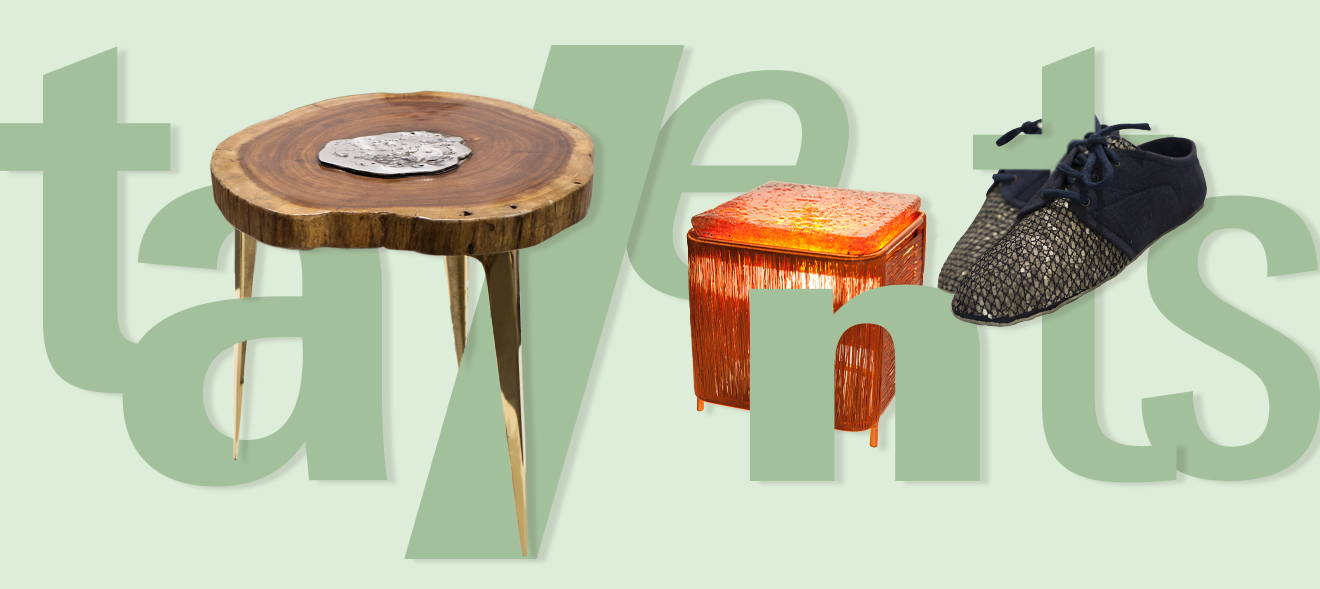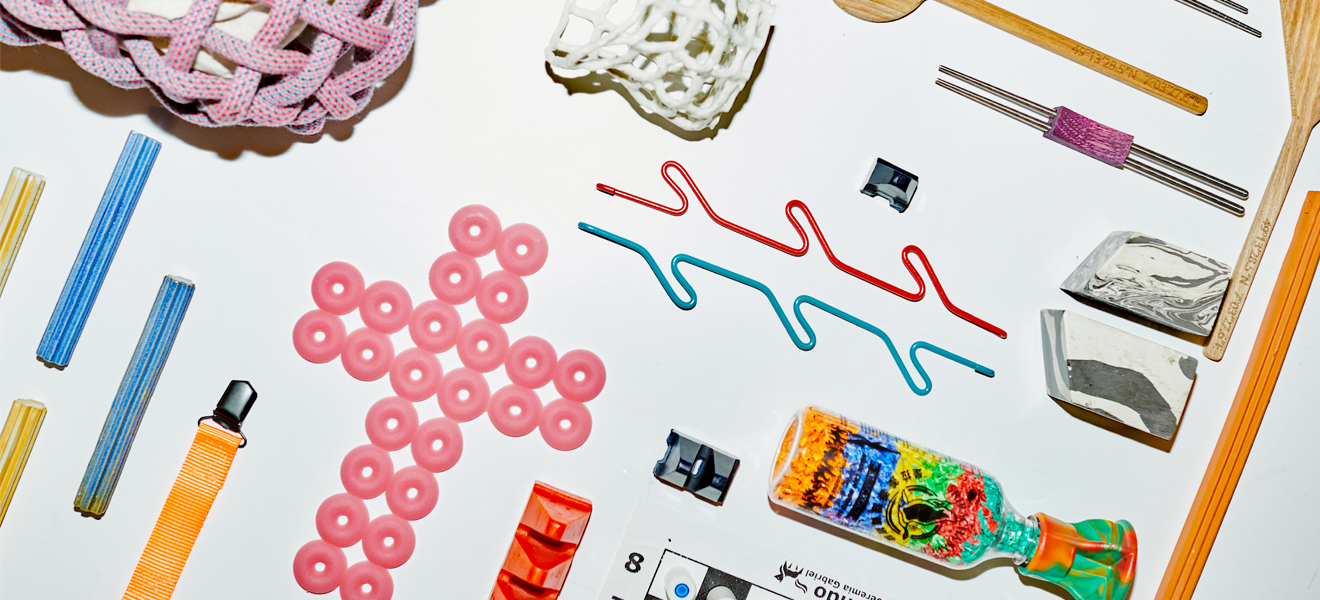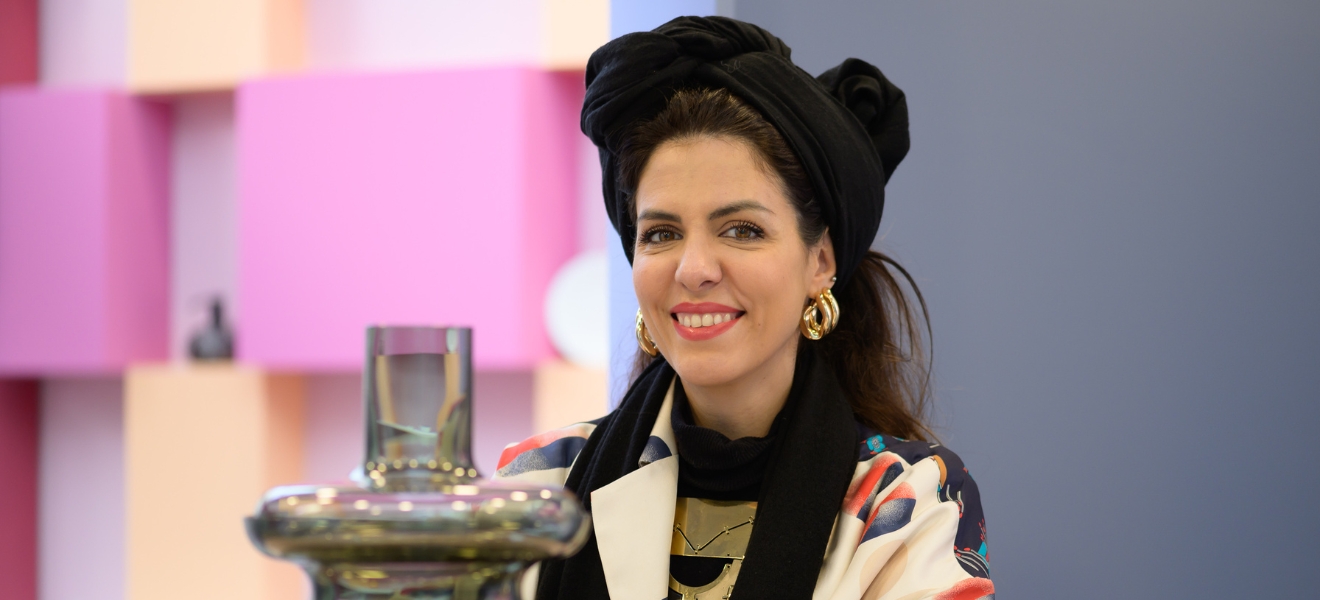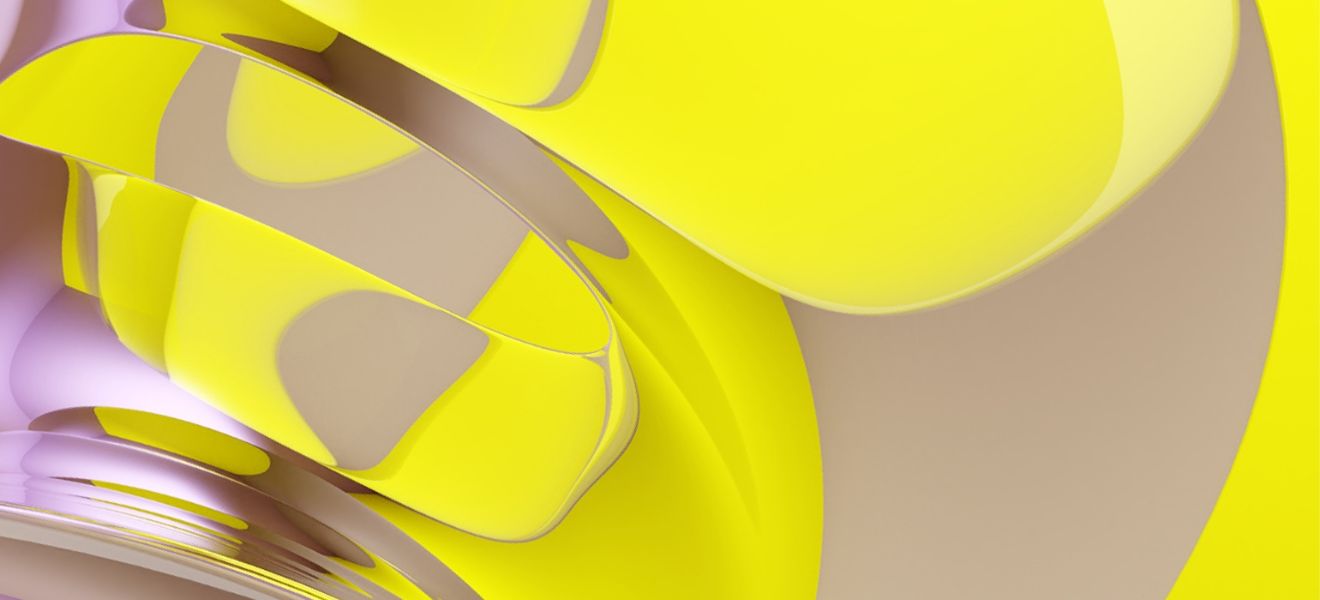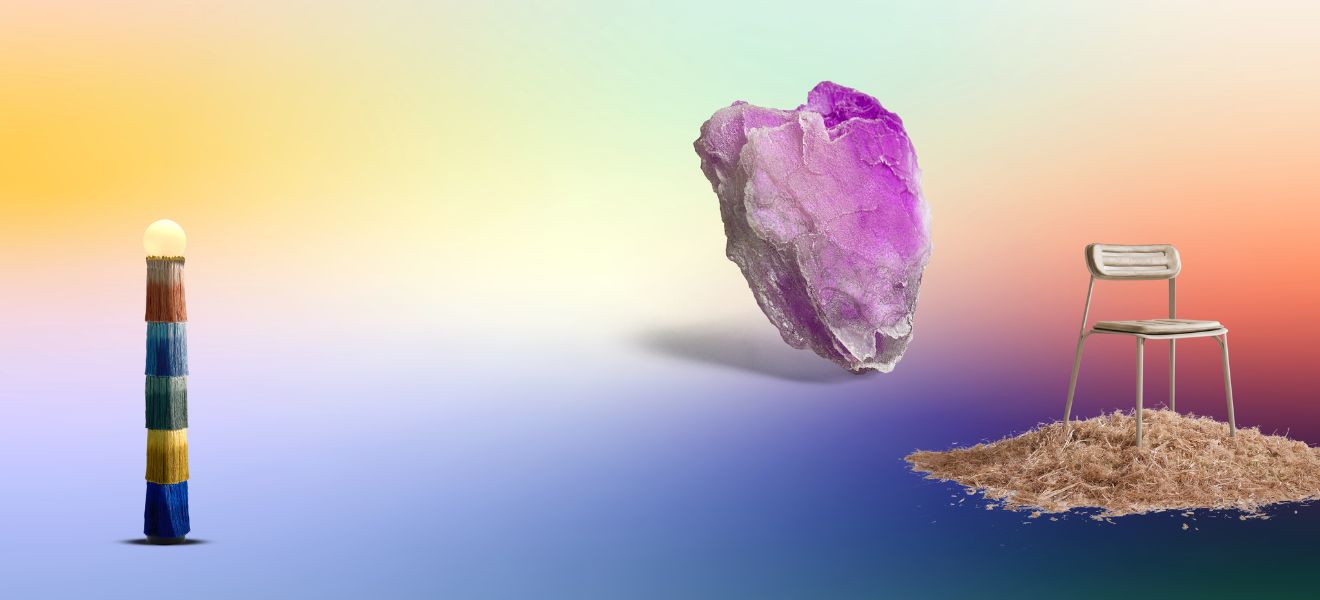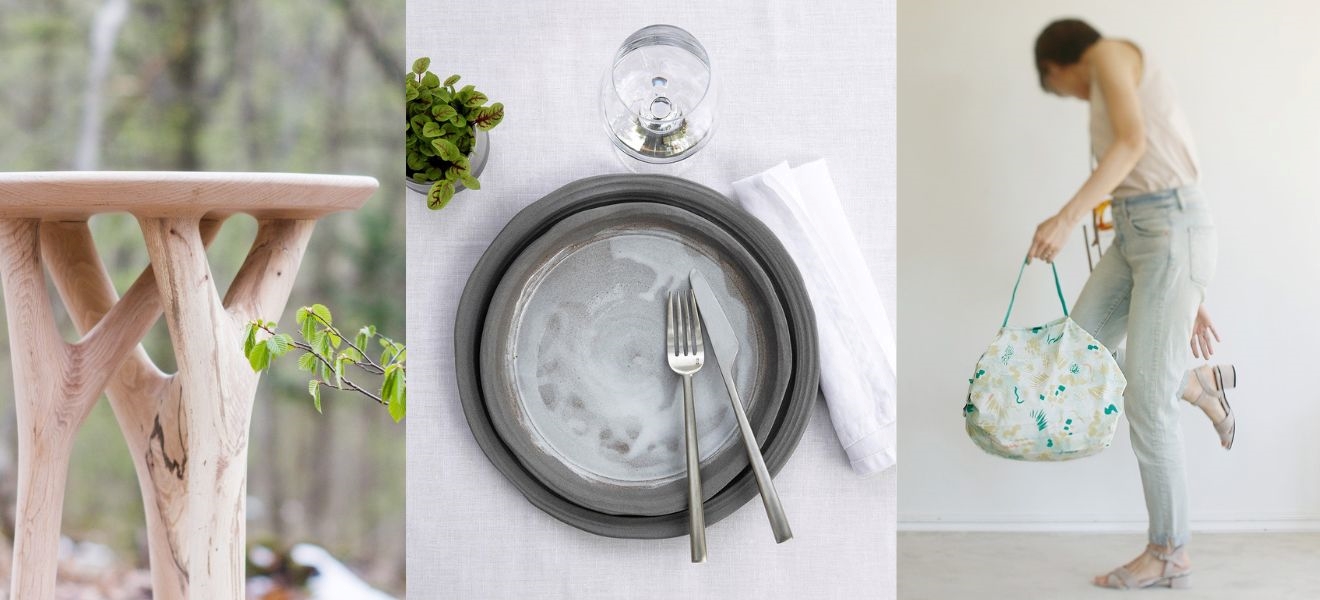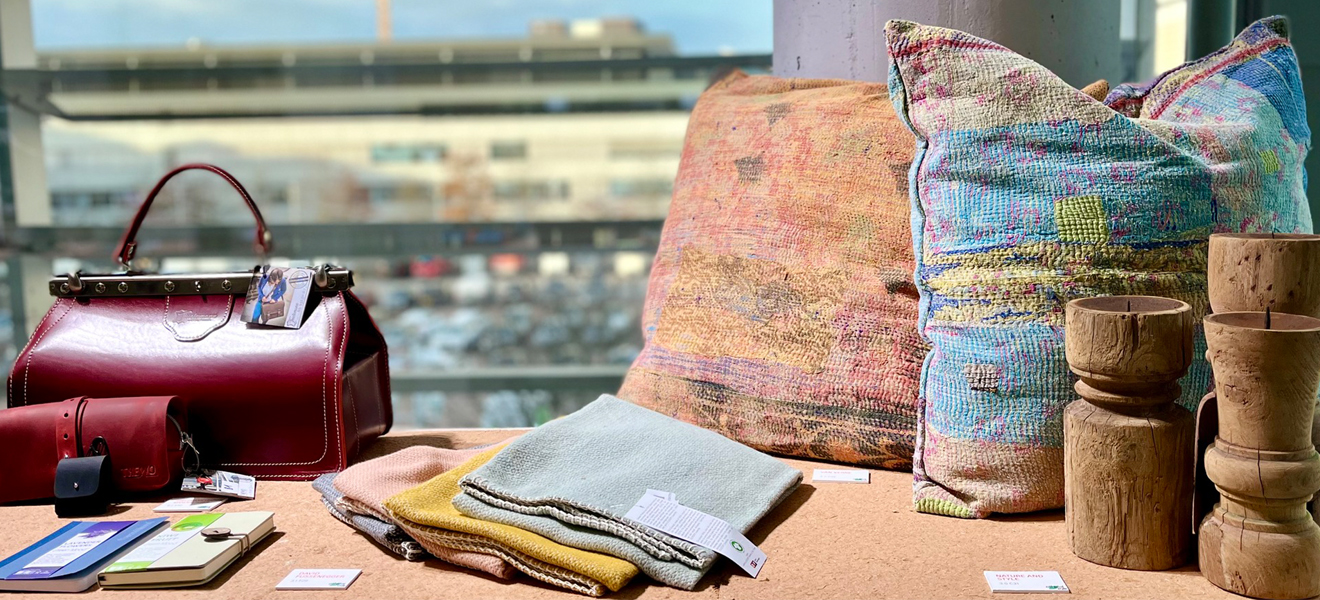We all know resource conservation, clean manufacturing, short transportation routes and fair remuneration are key markers of sustainability. Yet true ethical style lies in developing designs that connect with the bigger picture – and in this respect our young talents are truly far-sighted.
Tinder!
Tinder is a really pure, natural material. It’s a fungus which grows on birch or beech trees, feeding off and decomposing the sick ones. Nina Fabert focused during her Masters degree at Weißensee Kunsthochschule Berlin on new materials, and came across this fungus. The tree fungus can be loosened and softened by impact, until it’s malleable and feels like very soft leather. This procedure is carried out by hand, and has a long history, now continuing mainly in Romania from where Fabert gets the material for her products.

Fabert shows us a soft cap, which looks good even unadorned, and a glove. The glove might interest people with sensitive skin, as the fungus is said to have healing properties. It’s no wonder that both the medical and cosmetics industries are very interested in this tree fungus. Yet the real strength of Zabert and her new firm Zvnder lies in investigating the material, which holds so many surprises. For example if you hold up the silky-soft, dark brown tinder, you can suddenly see through it in the right light. Is it a product or is it art? Fabert often wonders. She strokes the small tinder item lovingly, demonstrating in her words and gestures the high regard she has for this bounty from nature.


Shape the next step
‘Punāh’ is Sanskrit and Hindi for ‘again’. And it’s also the name of an innovative project by the Indian conglomerate Godrej & Boyce, which manufactures over 600 products, from work clothing to aircraft parts. This generates huge amounts of industrial waste, which will now be recovered straight away through the Punāh Project.
Aluminium, steel, copper and bronze are just some of the quality recycled materials Rowley works with. Although the samples we can see have simply been compacted for demonstration purposes, the materials themselves are clearly attractive, like miniature works of art. The main aim is to find a practical new use for them. Rowley presented a table lamp at Ambiente in which copper wires from abandoned motors are combined with resin to produce a warm glow. Finer, more fashionable items are also on show – witness this shimmering clutch bag, or the shoes covered in small pieces of metal waste from old coffee machines. The conglomerate generates over 18,500 tonnes of waste materials each year, so it’s great that Godrej‘s innovation centre is already considering the next step these materials will take.
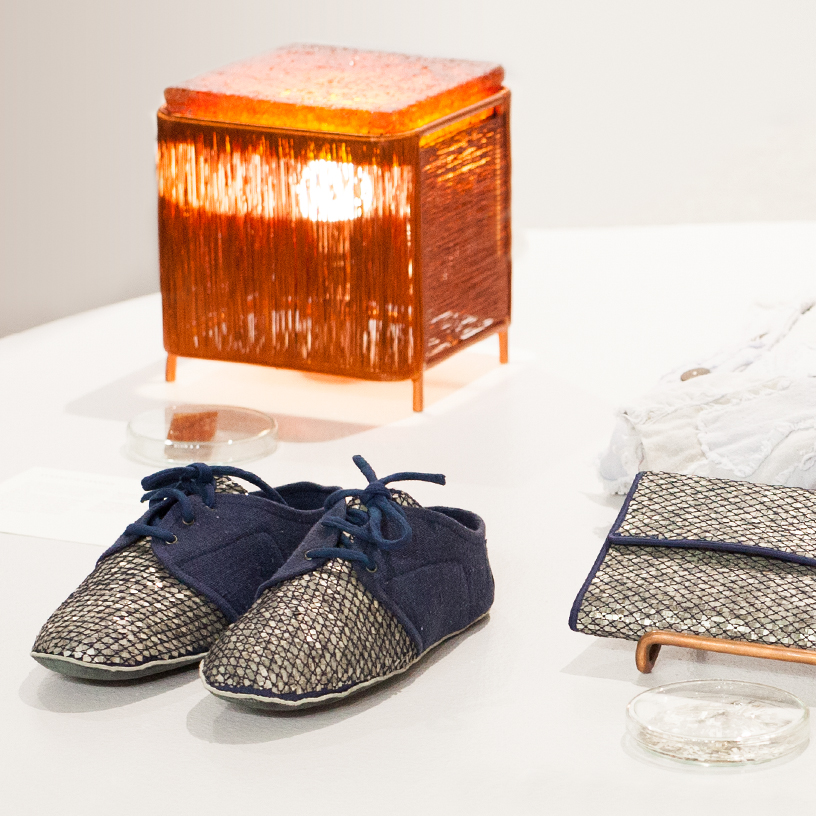


The hot core of the earth
Her mission is to reclaim used materials. Advaeita Mathur creates furniture with a really strong presence from sections of tree trunk and molten steel. Her inspiration lies in the Earth’s core. This is made of enormously dense metals, and we witness the explosive power that lies under the Earth’s surface when volcanic eruptions spew out hot lava. Mathur was looking for an opportunity to capture this primeval force and draw a connection between destruction and creation, between the solid and the liquid. The amorphous shapes of the trunk sections from (already felled) tropical trees and liquefied scrap metal proved the perfect materials with which to achieve this.
While Mathur’s mirrors use metal surrounded by decorative wood, the tables showpiece the smooth, flowing quality of steel. This makes the centre of her seriously weighty side table look as fluid as water. Its solid brass legs can be unscrewed to adjust the height. Clear varnish gives the wooden surface its sheen. Mathur’s company Studio Metallurgy also makes jewellery: this delicate Indian lady wears a wonderful chain made from molten, grainy scrap metal which looks like a chunk of silver coral.

